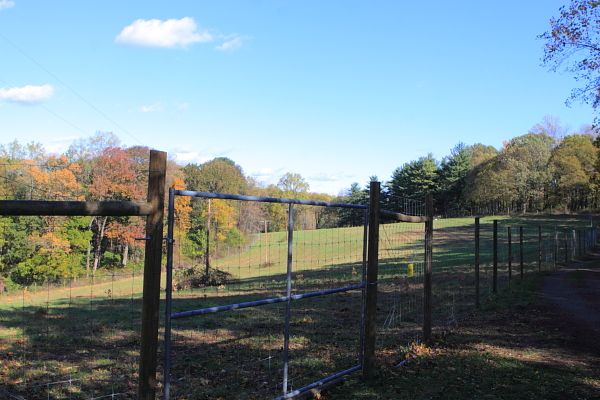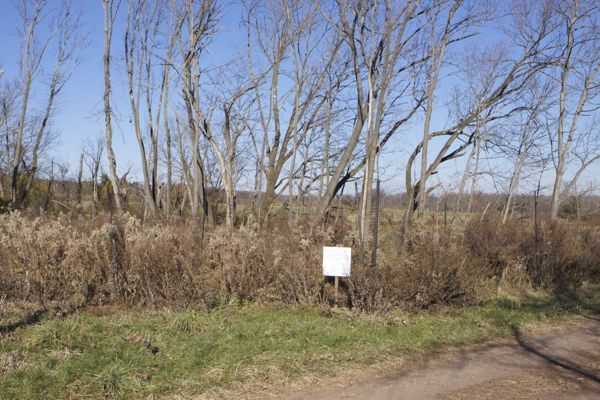Destroying A Lovely Park Meadow In Pursuit of Stewardship
Familiar Faces, Familiar Failures
[Important update below]
I originally wrote about this issue in an October 18, 2010 post “Can’t See the Meadow for the Trees”, in which I laid out my opposition to the concept and design of the reforestation project in depth, based on the public parks philosophy and landscape design principles of Frederick Law Olmstead and my own aesthetics and personal experiences.
At that time, I was a regular – at least weekly – visitor to Baldpate, and had been so since 1992, before it was a Mercer County Park and the land was still privately owned. But now, 4 years later, I’ve moved to Bordentown and rarely get there.
I visited for a walk on Saturday and was appalled by what I saw – the project is an abject failure. So, let’s drill down on that.
According to the Friends of Hopewell Valley Open Space Strategic Plan – 2011 – 2016:
Objective 5: Demonstrate responsible land stewardship on FoHVOS preserves and encourage partners throughout the Hopewell Valley (e.g., nonprofit conservation groups, private and corporate landowners, state, county and local governments) to implement similar practices.
Strategies:
- Assure success of recent restorations (e.g., forest habitat at Baldpate, meadow habitat at Thompson), future restorations, and other stewardship activities to demonstrate effective stewardship within the Hopewell Valley.
According to the Mercer County Parks Commission’s “Stewardship” webpage:
Baldpate Reforestation: In 2010, 8.3 acres of abandoned agricultural fields on top of Baldpate Mountain were planted with over 1,600 native trees and shrubs. To prevent deer from damaging the planted trees, an 8-foot fence was built to protect the reforestation areas. This project was made possible by nearly 300 volunteer hours and generous grants from Conservation Resources, Inc., the U.S. Fish and Wildlife Service, and the Grainger Foundation.
Back on October 17, 2010, in a conversation with a parks professional and an email exchange with FoHVOS, I raised objections to this project and asked about it’s conservation rationale and was told this:
I know the sight of the deer fencing is jarring but, without it, the new plantings wouldn’t stand a chance with the hungry deer.
This field and the smaller one near the orchard are the only ones being reforested. The decision was made after careful consideration of bird habitat needs. We have a substantial body of data on Baldpate’s bird populations and, without a doubt, the forest on Baldpate is its most critical habitat, particularly for forest interior nesting warblers.
A little over 4 years ago, (on 10/17/10), the site looked like this: (does that look like what Mercer County called an “agricultural field” to you? It sure looks like a lovely meadow to me.)
Take a closer look at what it looks like now – it looks like there was a LOT more than a deer browse problem.
Especially note the invasives and the choking vines; the downed deer fence; the condition of those “1,600 native trees and shrubs” that were planted that are being choked; and the total lack of sustained “stewardship”:
I noted from the Mercer County Parks Commission “Stewardship” webpage description of the project that it was funded in part by Conservation Resources, Inc. – note the similar failure to a nearby carbon sequestration project, also in Hopewell, managed by CRI:
Many of these same organizations and individuals – with the same scientific qualifications, the same sham conservation justifications, the same landscape values and visions, and elite worldview -have managed to commandeer $71 – $117 million per year in “open space” funding as a result of the voter approval of ballot questions #2.
As I wrote yesterday (and warned previously), a newly authorized use of the funds is “stewardship”, and up to 20% of those funds are expected to be appropriated for that purpose (which also includes commercial logging).
Meanwhile, NJ’s public parks – used regularly by millions of New Jerseyans – crumble with a $400 million deferred maintenance backlog.
Now that the public has been misled once in approving the open space ballot, it is critical that close scrutiny be provided to every single appropriations bill from that new fund to see that these same mistakes are not repeated.
We will keep you posted as all this unfolds.
[Update: A knowledgeable reader just sent me a relevant high quality April 2014 study: Plant Stewardship Index Survey and Report Ted Stiles Preserve at Baldpate Mountain *Public Version* (I wonder what was edited out of the version not released to the public?)
The study confirms my layman’s observations and criticisms (see page 44 – 46) – so even if you agree that reforestation is an appropriate management of the meadow (which I don’t), the project is a failure.
The parties responsible have known for more than 6 moths of these severe problems and have done nothing to correct the situation – the non-response just so happened to coincide with the silence on the “Stewardship” issue by the KIG open space ballot proponents. Outrageous.
And I would love to have a full and frank discussion of exactly what “funder approaches” are.
I restate the findings in full (boldface are mine):
Large Reforestation Exclosure:
This is the second, larger reforestation exclosure. Maintenance as turf ceased in 2010, and the area was fenced and planted with native trees and forbs.
The area showed substantially poorer sapling growth than the small exclosure. This is attributable to the significant breeches in the exclosure fence. Deer sign was conspicuous throughout the area.
Much of the sapling regeneration in this area is white ash. Other tree recruitment appears to be from nearby trees, mostly wind-dispersed species.
The ground layer is dominated by Japanese honeysuckle, Japanese stiltgrass, and other weedy, primarily non-native species. Common milkweed and wrinkleleaf goldenrod are the most common native forbs.
Autumn olive has largely been controlled by herbicide. Multiflora rose is severely affected by rose-rosette disease.
An interesting occurrence of black cohosh was found, flowering, inside the fence. The nearest population outside the fence is approximately 30 meters away.
Stewardship Discussion
A few observations were made that pertain to deer fencing and afforestation. These are not intended to second-guess any existing practices (which were structured in part by funder approaches and time constraints), but to build on observation to inform future approaches.
1. Most of the saplings appeared to be natural recruits. Given adequate protection from deer browse, trees have recruited quite readily. Given that survivorship of planted tree stock appears quite low, this calls into question the practice of introducing trees to afforestation sites (at least where thorough site prep and supplemental watering are not feasible), as opposed to allowing trees to recruit naturally.
2. Exclosures should be managed with a mowed perimeter inside or outside the fence so that the fence can be regularly inspected for breeches and easily repaired should damage to the fence occur.
3. The survey found low diversity in the sapling cohort, and a high degree of invasive plant colonization of the ground layer. Might an alternate restoration approach, a type of long-term managed succession, lead to a more diverse restored habitat than direct afforestation? That is to say, successfully restoring a habitat to a diverse meadow and shrub community may lay the groundwork for a structurally and species diverse forest in the longer term; taking a lawn or ruderal field and planting trees in it may not lead to the desired future condition of diverse native forest.






Pingback: garcinia cambogia extract pure for sale